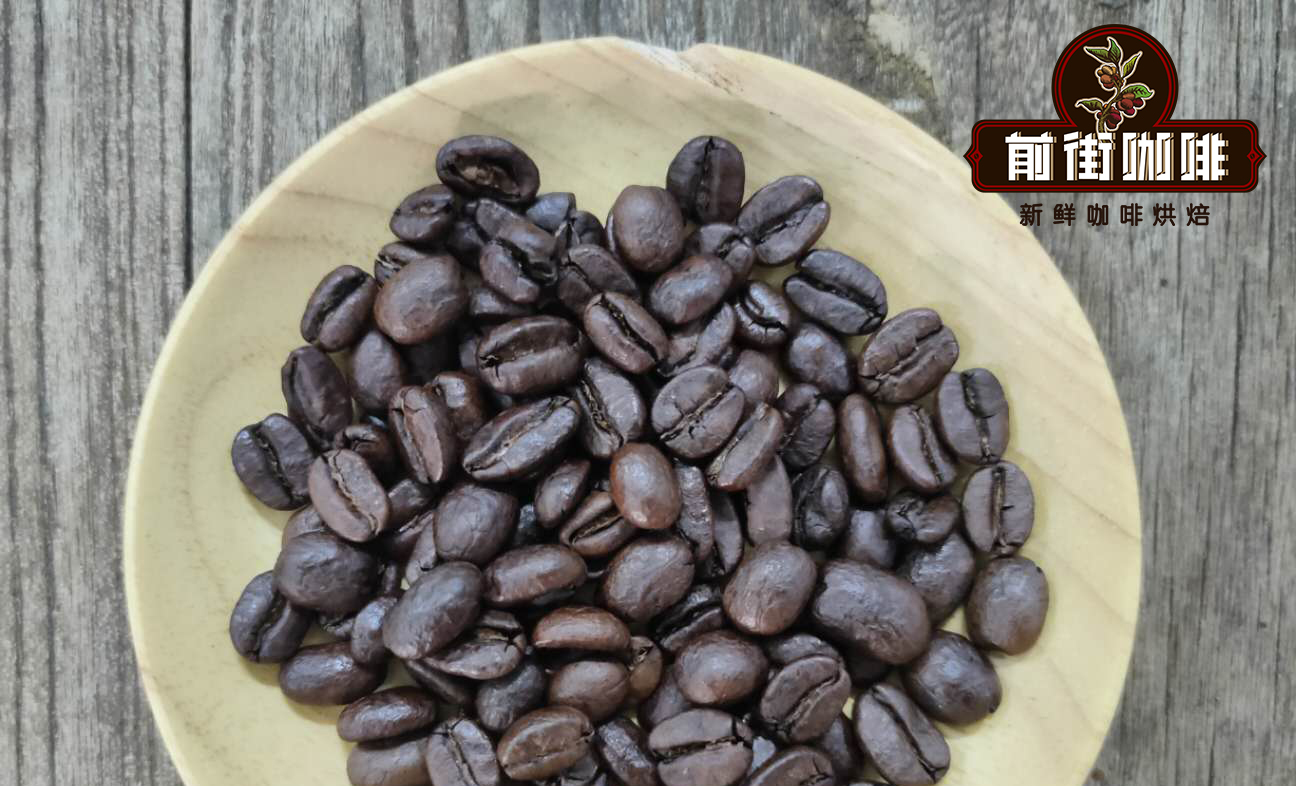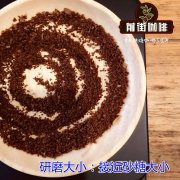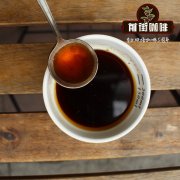How to choose low-caffeine coffee beans recommend the characteristics of low-caffeine coffee beans

Professional coffee knowledge exchange more coffee bean information please follow the coffee workshop (Wechat official account cafe_style)
The story of decaf
It is said that Goethe, a famous German poet, is also a coffee lover, but he suffers from the pain of being unable to sleep after drinking coffee. The feeling of love but not closeness makes Goethe go to his friend Runge to analyze the ingredients of coffee beans and find out why coffee interferes with sleep. Around 1820, Longi found out that the factor affecting sleep was caffeine and developed a way to separate coffee beans from caffeine, so Lungi became the ancestor of decaffeinated coffee.
At that time, although Lungi found the factors that affect coffee sleep, the technology of extracting caffeine could not produce decaffeinated coffee in large quantities until 1903, when Ludwig Roselius, a German importer of coffee beans, found that as soon as the coffee beans were soaked in sea water, the caffeine content decreased a lot, so he hired a group of chemists to research and develop the technology of extracting caffeine, which made an important breakthrough in the extraction technology. Decaffeinated coffee is just beginning to be mass produced.

What is decaf?
Decaf Decaf is the abbreviation of decaffeinated coffee (decaffeinated coffee). At least 97% of the caffeine in coffee from beans is removed. There are many ways to remove caffeine from coffee beans. Most of these include water, organic solvents or carbon dioxide. Wash the coffee beans in a solvent until caffeine is extracted, and then remove the solvent. Beans are decaf before they are roasted and ground. Except for caffeine content, the nutritional value of decaffeinated coffee should be almost the same as that of ordinary coffee. However, depending on the method used, the taste and smell may become slightly mild and the color may change. This makes decaffeinated coffee more enjoyable for people who are sensitive to the bitterness and smell of regular coffee.
Does decaf mean no caffeine at all? It's not. Qianjie Coffee believes that although decaffeinated coffee extracts a large amount of caffeine, it still remains 2%, 3%, that is, each cup of decaf espresso still contains about 0-7 mg of caffeine, although there will still be caffeine, but compared with ordinary espresso, decaf caffeine will not be affected by most people.
Decaffeinated coffee treatment
There are many ways to remove caffeine, which can be divided into direct / indirect solvent treatment, supercritical carbon dioxide treatment and Swiss water treatment.
[direct solvent treatment]
Direct solvent treatment is the use of dichloromethane, ethyl acetate and other chemical solutions to dissolve caffeine. First of all, steam is used to open the stomata of the raw coffee beans, and the dichloromethane solvent is directly added to the coffee beans. After the solvent and caffeine are fused, the caffeine-filled solvents are washed out, and the coffee beans are boiled again to remove all residual solvents.
There are concerns about using dichloromethane as a solvent because it is suspected that long-term exposure increases the risk of cancer. But in fact, FDA limits the dichloromethane content of decaf to 0.001%, which is actually lower than that, with little side effect.
The process of using ethyl acetate as a solvent is the same, ethyl acetate usually comes from sucrose, so when used, the direct solvent method is sometimes referred to as sugarcane decontamination. This method is usually used in de-causation in Colombia. But ethyl acetate is a highly flammable substance, so it is more dangerous.

[supercritical carbon dioxide treatment]
This treatment is to first let the coffee beans absorb water and expand, and the caffeine molecules are loose in the coffee beans. Add liquefied carbon dioxide and create more than 100 atmospheric pressure in water. Carbon dioxide is highly selective and does not "damage" the carbohydrates and proteins in coffee beans while dissolving caffeine, ensuring that the flavor of coffee beans is not destroyed. Liquid carbon dioxide that takes away caffeine can also be removed and recycled.
Coffee made from decaffeinated carbon dioxide has a lower burden on the human body, and according to the study, this method extracts more coffee than the direct solvent method, and the cost of this method is much higher than that of the direct solvent method.
[Swiss Water treatment Act]
The Swiss water treatment method was developed by the Swiss company Coffex in the late 1970s, and SWISS WATER ®is currently patented. This treatment will soak the raw coffee beans in hot water, and the soaking stage has actually partially removed caffeine. The soaked solution is then filtered with activated carbon and finally poured back into the coffee beans. This series of steps will be more effective in removing caffeine. In addition to not requiring the use of chemical solvents, the soaked solution can be reused in different batches of treatment procedures, but the coffee will still lose flavor during the filtration process.
The caffeine removal rate of this method can reach 99.9%, which is also the highest method of caffeine removal.

Combined with the above decaf treatment, Qianjie Coffee believes that the bad taste of decaf coffee is not caused by the treatment. Because most decaf coffee in the raw materials to choose some cheap, commercial grade coffee beans. If the taste of decaf coffee is not compromised, the selection of coffee beans is very important. The damage to the taste of decaffeinated coffee is mainly due to the steps of soaking or steaming coffee in water in the process of removing caffeine. Now, thoughtful coffee roasters are looking for varieties of coffee beans that retain their fragrance, and even if they go through the process of removing caffeine, their acidity and consistency will not be lost. Of course, coffee beans are also an agricultural product after all, and the longer it takes from the farm to the coffee cup, the more decaf coffee will naturally lose its flavor.
The decaf coffee of Qianjie Coffee is from Cymbidium, Colombia, and the details are as follows:
Producing area
Colombian cymbidium producing area
Altitude
1750 meters
Variety
Iron pickup
Treatment mode
Swiss water treatment
Flavor
Berries, oranges, cocoa, nuts

Because the fiber structure of this bean is different, the cooking parameters need to be adjusted, as shown in the table below:
Powder quantity
15g
Proportion
1:15
Water temperature
88 ℃
Grinding degree
Rough grinding (pass rate of No. 20 standard sieve 62%)
Filter cup
Kono filter cup

1. Pour in the coffee powder and steam for 30 seconds with twice the amount of water (30ml).
two。 Then carry out the second stage of water injection, gently circle and inject 150ml hot water to push up the powder layer so that the surface rushes out of the gold foam surface.
3. When the water level of the powder layer drops slightly, the last section of 45ml is injected. After all the coffee liquid flows into the pot, remove the filter cup and end the extraction. The extraction time is 2 minutes and 10 seconds.
This bean is a classic Colombian water-washed coffee, with nutty dark chocolate aromas, soft citrus acid and rich cream chocolate.
Qianjie coffee: Guangzhou bakery, the store is small but a variety of beans, you can find a variety of unknown beans, but also provide online store services. Https://shop104210103.taobao.com
For more boutique coffee beans, please add private Qianjie coffee on Wechat. WeChat account: kaixinguoguo0925
Important Notice :
前街咖啡 FrontStreet Coffee has moved to new addredd:
FrontStreet Coffee Address: 315,Donghua East Road,GuangZhou
Tel:020 38364473
- Prev

Can decaffeinated coffee refresh you? how to drink decaf beans? how to make decaf?
Professional coffee knowledge exchange more coffee bean information please follow the coffee workshop (Wechat official account cafe_style) want to avoid consuming too much caffeine, but also want to taste the flavor of coffee, there are several common ways to remove caffeine, in fact, not completely non-caffeinated, just a very small amount, the content < 2.5% can be called low-caffeinated coffee beans, the following is the production of low-caffeinated coffee beans
- Next

The difference between decaf beans and ordinary coffee beans. Is decaf harmful? price of decaf?
Professional coffee knowledge exchange more information about coffee beans Please follow the coffee workshop (Wechat official account cafe_style) once upon a time, people who drank decaf coffee (low-caffeine coffee) were always an unpopular group. The owners of the coffee shop dislike them for being nosy, and people who claim to be real coffee families also think that they are pretentious. They always seem to be sitting at the losers' table in the cafe.
Related
- Beginners will see the "Coffee pull flower" guide!
- What is the difference between ice blog purified milk and ordinary milk coffee?
- Why is the Philippines the largest producer of crops in Liberia?
- For coffee extraction, should the fine powder be retained?
- How does extracted espresso fill pressed powder? How much strength does it take to press the powder?
- How to make jasmine cold extract coffee? Is the jasmine + latte good?
- Will this little toy really make the coffee taste better? How does Lily Drip affect coffee extraction?
- Will the action of slapping the filter cup also affect coffee extraction?
- What's the difference between powder-to-water ratio and powder-to-liquid ratio?
- What is the Ethiopian local species? What does it have to do with Heirloom native species?

